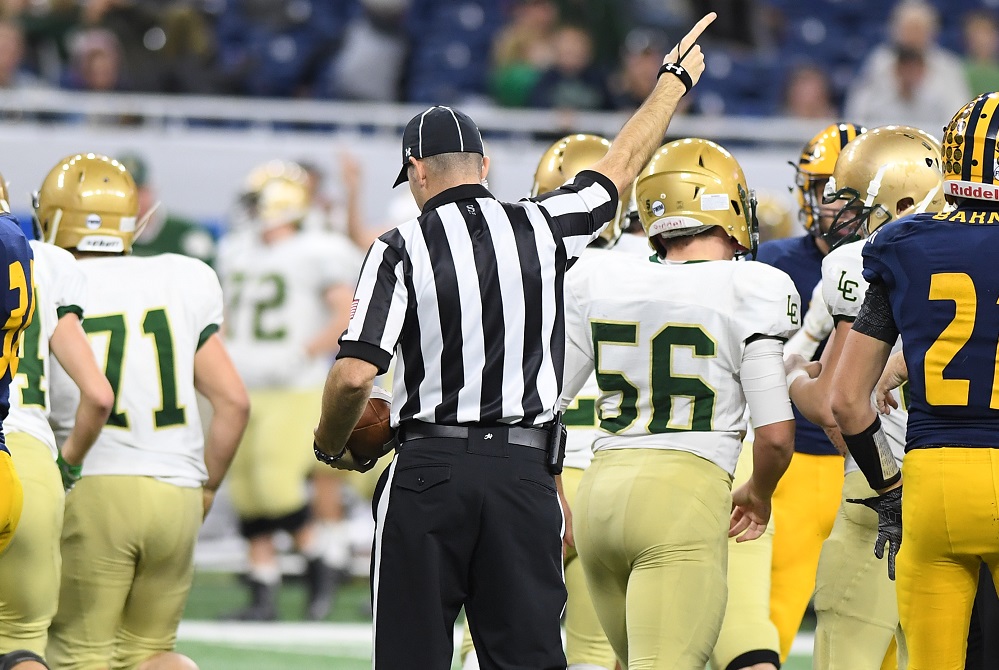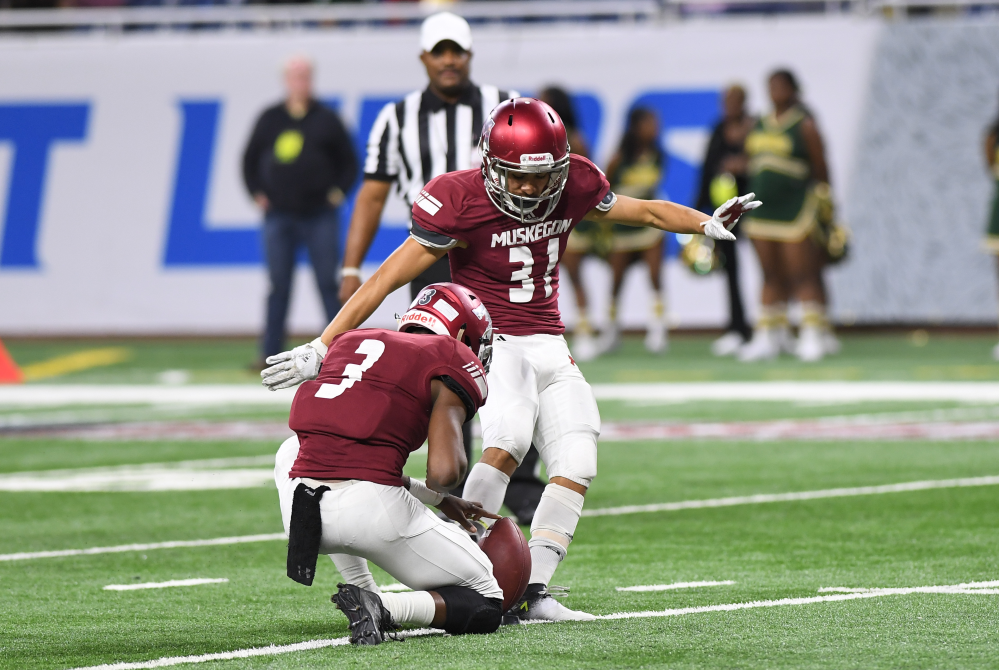
Be the Referee: Pass Interference
By
Geoff Kimmerly
MHSAA.com senior editor
September 2, 2021
This week, MHSAA officials coordinator Sam Davis explains the differences in high school pass interference rules from those at the college and pro levels.
Be The Referee is a series of short messages designed to help educate people on the rules of different sports, to help them better understand the art of officiating, and to recruit officials.
Below is this week's segment – Pass Interference – Listen
One of the big differences between high school football and the college or pro game is how pass interference is called.
In high school, there is no such thing as an “uncatchable” pass. If there is illegal contact by the defender while the ball is in the air, that’s pass interference, no matter where the pass ultimately ends up.
Also – in high school – a defender can “face guard” as long as no contact is made with the receiver. That is not pass interference, even if the defender does not look back for the ball.
Both of those interpretations differ from the college and pro game. Both (of those) levels have an uncatchable exception, and neither allows for face guarding.
Keep that in mind the next time you think you’ve spotted pass interference at the high school level.
Previous editions
Aug. 26: Protocols and Mechanics – Listen

Be the Referee: Blocked Kick
By
Sam Davis
MHSAA Director of Officials
October 10, 2023
Be The Referee is a series of short messages designed to help educate people on the rules of different sports, to help them better understand the art of officiating, and to recruit officials.
Below is this week's segment – Blocked Kick - Listen
It’s 4th-and-10. Team A is lining up on its 25-yard line to kick a field goal. The kick is blocked backward by Team B, never crossing the line of scrimmage. The kicker is able to scoop the ball up and take off, getting down to the 7-yard line before being tackled.
The next down should be:
- First-and-goal from the 7 for Team A – the kicking team.
- First-and-10 from the 7 for Team B – the defensive team.
- First-and-10 from the 25-yard line for Team B.
If you said 1st-and-Goal for Team A, you are correct. Because the kicked ball never crossed the line of scrimmage, the kicking team is able to pick the ball up and advance it. Because it was carried past the line to gain, it’s a first down.
Previous Editions
Oct. 3: Volleyball Double & Lift - Listen
Sept. 26: Registration Process - Listen
Sept. 20: Animal Interference - Listen
Sept. 13: Feet Rule on Soccer Throw-In - Listen
Sept. 6: Volleyball Jewelry - Listen
Aug. 30: Football Rules Similarities - Listen
Aug. 23: Football Rules Differences - Listen

